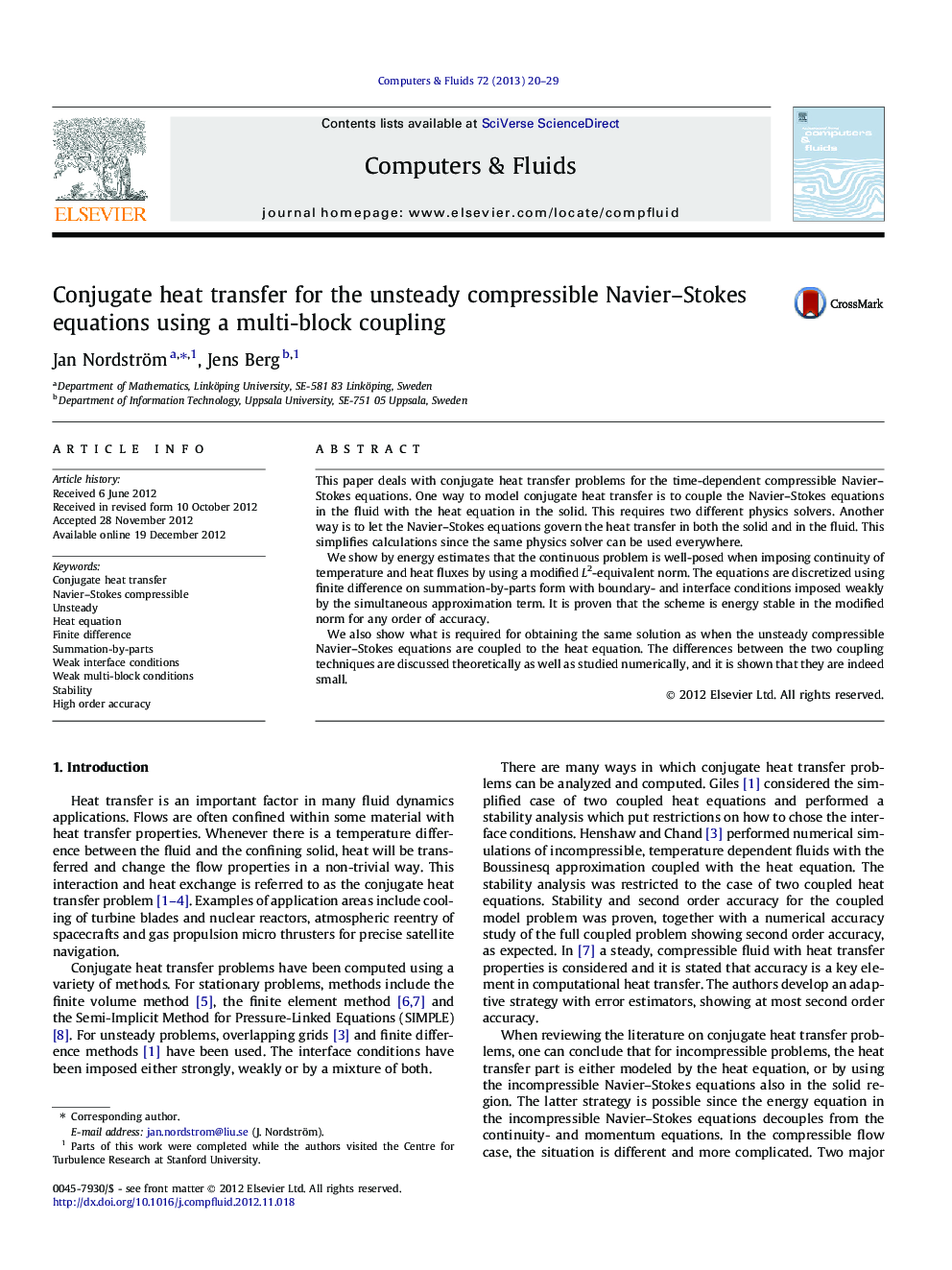| Article ID | Journal | Published Year | Pages | File Type |
|---|---|---|---|---|
| 768667 | Computers & Fluids | 2013 | 10 Pages |
This paper deals with conjugate heat transfer problems for the time-dependent compressible Navier–Stokes equations. One way to model conjugate heat transfer is to couple the Navier–Stokes equations in the fluid with the heat equation in the solid. This requires two different physics solvers. Another way is to let the Navier–Stokes equations govern the heat transfer in both the solid and in the fluid. This simplifies calculations since the same physics solver can be used everywhere.We show by energy estimates that the continuous problem is well-posed when imposing continuity of temperature and heat fluxes by using a modified L2-equivalent norm. The equations are discretized using finite difference on summation-by-parts form with boundary- and interface conditions imposed weakly by the simultaneous approximation term. It is proven that the scheme is energy stable in the modified norm for any order of accuracy.We also show what is required for obtaining the same solution as when the unsteady compressible Navier–Stokes equations are coupled to the heat equation. The differences between the two coupling techniques are discussed theoretically as well as studied numerically, and it is shown that they are indeed small.
► Conjugate heat transfer using the unsteady compressible Navier–Stokes is investigated. ► Well-posedness of the multiblock coupling is proven. ► A stable and high-order accurate scheme is derived. ► Numerical simulations corroborate the theory. ► Numerical comparisons with standard methodology is included.
